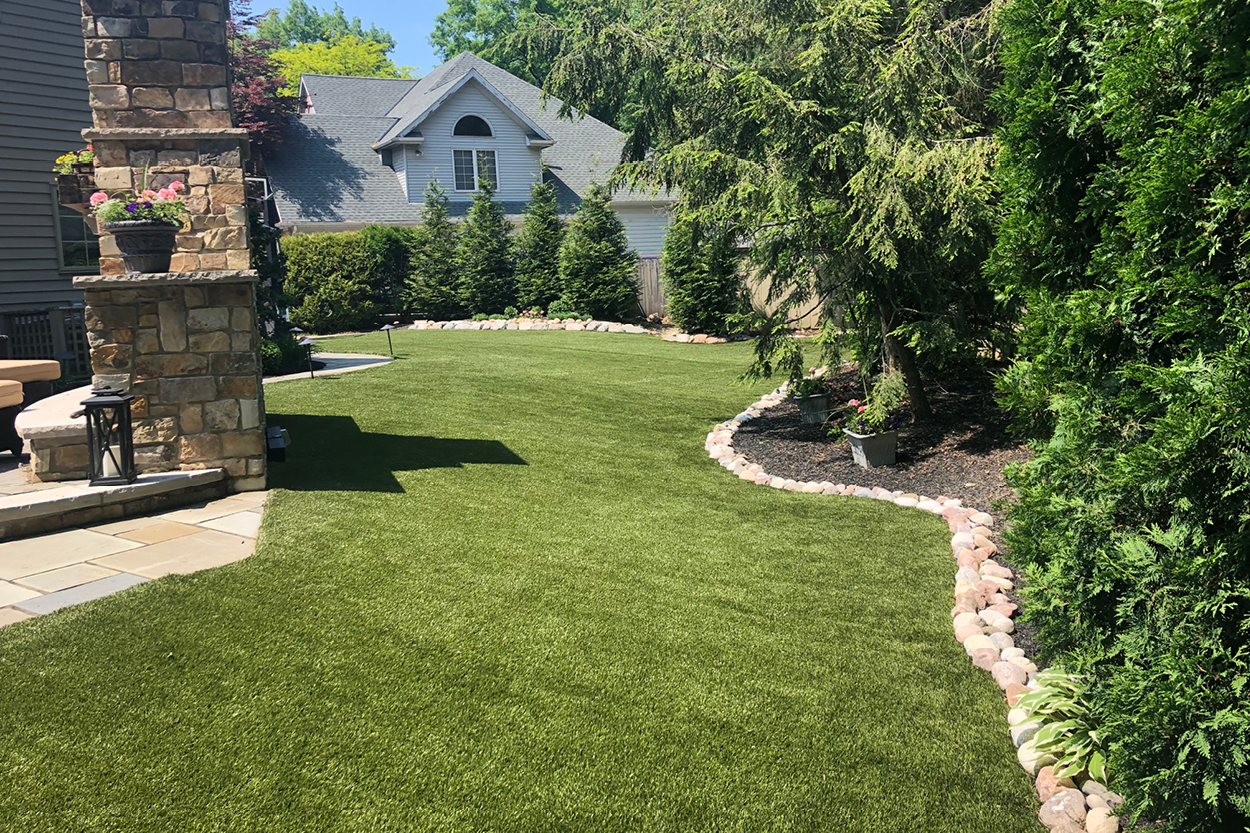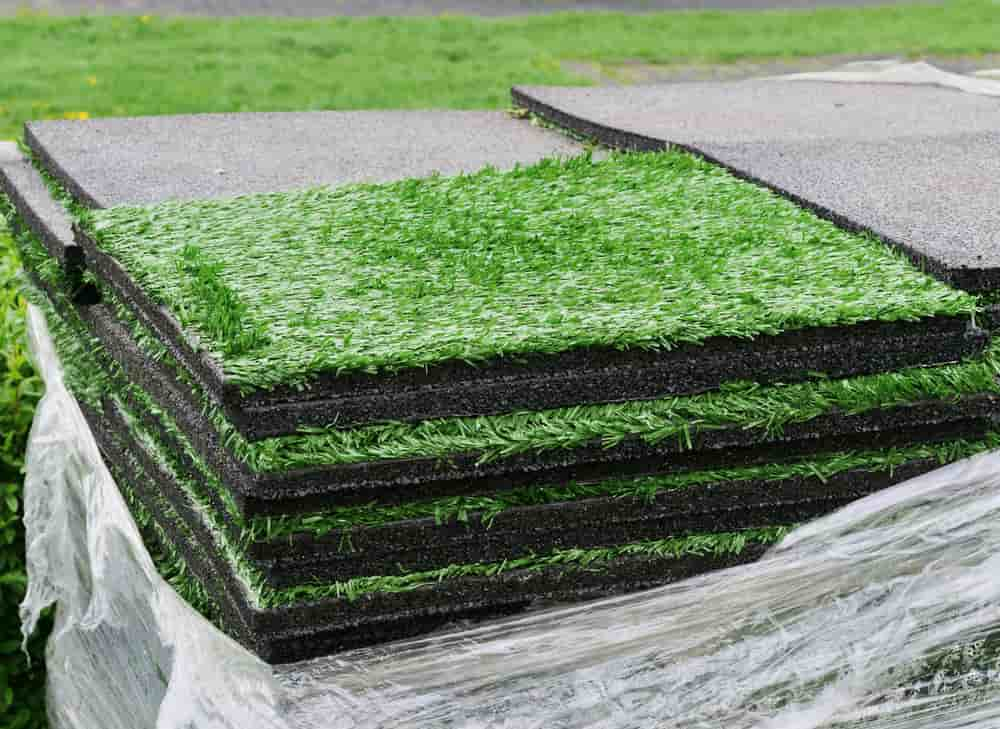Delve Into the Environmental Advantages of Opting for Artificial Turf Solutions
The fostering of man-made turf services presents an engaging chance to deal with pressing ecological difficulties. By considerably decreasing water usage and decreasing the application of unsafe chemicals, these choices not only promote lasting landscape design but additionally secure regional communities. The lower carbon footprint associated with decreased upkeep tasks adds to an extra sustainable approach to land management. The implications of these advantages expand beyond simple conservation efforts, raising inquiries about their lasting effect on environment conservation and total eco-friendly balance. Discovering these measurements reveals a complex interaction worth thinking about.
Water Preservation Benefits
One of the most significant benefits of artificial lawn is its ability to conserve water. In contrast, man-made turf does not require watering, dramatically minimizing the general demand for water sources.
By eliminating the need for routine watering, synthetic grass adds to sustainable landscape methods and helps alleviate the ecological influence of extreme water consumption. In addition, the conservation of water reaches the reduction of drainage, which can result in dirt disintegration and river pollution.
In addition, the installation of artificial grass permits towns and homeowners to allocate water resources extra efficiently, concentrating on crucial uses such as drinking water and farming. The shift towards man-made grass not just advertises accountable water use yet additionally aligns with broader ecological objectives targeted at preserving natural deposits.
As areas increasingly prioritize sustainability, the water conservation benefits of synthetic grass offer an engaging instance for its adoption in property and business landscaping projects.
Decreased Chemical Usage
The transition to synthetic grass considerably decreases the reliance on chemical therapies generally utilized in all-natural lawn maintenance. Conventional turf management usually includes the application of pesticides, fertilizers, and herbicides to promote development and control insects. These chemicals can posture risks to human health, neighborhood wildlife, and the atmosphere, adding to soil and water contamination.
In comparison, synthetic lawn eliminates the demand for these unsafe compounds. By minimizing the release of artificial compounds into the environment, artificial grass advertises healthier dirt and water systems.
Furthermore, the lack of chemical runoff related to synthetic lawn installations assists shield regional rivers from pollution, supporting marine life and maintaining biodiversity. Arizona artificial turf. As communities progressively focus on lasting methods, choosing synthetic lawn offers a practical option that aligns with environmental preservation objectives. Via this shift, home proprietors can enjoy lush green areas without jeopardizing eco-friendly wellness, leading the way for an extra sustainable future
Lower Carbon Impact

Furthermore, the installation of fabricated turf can lead to substantial water conservation. Natural lawns call for considerable amounts of water for irrigation, which not only includes to the carbon impact linked with water extraction and treatment however likewise stress neighborhood water sources. In comparison, synthetic grass needs very little maintenance, needing no watering, consequently dramatically reducing water usage and its associated energy costs.
In addition, the longevity of synthetic grass adds to its reduced carbon impact. With a life-span of as much as 15 years or more, the need for constant substitutes is reduced, causing much less waste and lower energy consumption in production and getting rid of standard turf alternatives. Overall, artificial grass provides a sustainable option for eco mindful landscape design.
Environment Preservation
Habitat conservation is an important factor to consider in the debate over landscape design options, particularly when contrasting man-made grass to natural yard. Natural grass lawns often call for extensive upkeep, consisting of the usage of herbicides, plant foods, and pesticides, which can detrimentally affect local ecosystems. These chemicals can seep into the dirt and waterways, hurting indigenous plants and animals and interrupting local habitats.
Synthetic grass gets rid of the requirement for damaging chemicals, consequently shielding neighboring wild animals and keeping the honesty of surrounding communities. The setup of synthetic turf can lead to the conversion of former lawn locations into more biodiverse landscapes, such as pollinator yards or indigenous plant locations, which can sustain neighborhood wild animals.
Inevitably, the shift to artificial turf not just preserves water and lowers upkeep efforts but likewise promotes a more unified connection in between human activities and the natural environment, advertising environment conservation while doing so.
Long-Term Sustainability
Long-lasting sustainability is an important element in evaluating the advantages of synthetic lawn over standard turf lawns. Among one of the most considerable advantages of synthetic grass is its toughness; it can last approximately 15-20 years with very little upkeep, whereas natural grass calls for constant reseeding image source and replacement. This long life minimizes the need for continuous resources, such as water, plant foods, and chemicals, which are important for keeping a healthy turf yard.
Furthermore, man-made lawn adds to a reduction in carbon emissions connected with yard care equipment. Traditional you can try these out grass typically require gas-powered mowers, leaners, and blowers, all of which contribute to air contamination. Arizona artificial turf. In contrast, man-made turf removes the requirement for such devices, advertising a cleaner environment
Additionally, the manufacturing of synthetic grass increasingly makes use of recycled products, enhancing its sustainability profile. As makers adopt environment-friendly techniques, the environmental impact of synthetic grass remains to diminish.

Final Thought
The adoption of man-made grass solutions provides considerable ecological benefits, consisting of substantial water conservation, lowered reliance on harmful chemicals, and a reduced carbon footprint. Moreover, synthetic grass help in preserving natural habitats by lessening land disturbance and advertising lasting sustainability with the use of durable materials. Jointly, these factors highlight the potential of synthetic grass to contribute positively to ecological health and offer a viable option to traditional landscaping methods in a progressively resource-conscious globe.
In contrast, synthetic grass does not require watering, substantially lowering the overall demand for water resources. By lessening the launch of artificial compounds into the environment, man-made lawn advertises healthier soil and water systems.
Moreover, the installment of fabricated lawn can result in substantial water conservation. In comparison, man-made lawn requires marginal maintenance, requiring no watering, thus substantially minimizing water use and its linked energy More Bonuses prices.
